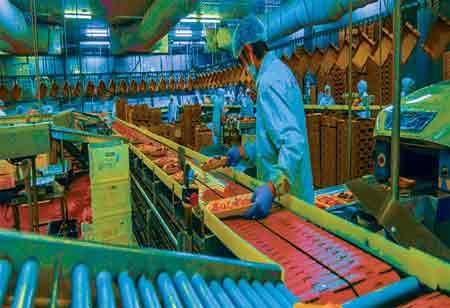THANK YOU FOR SUBSCRIBING
Be first to read the latest tech news, Industry Leader's Insights, and CIO interviews of medium and large enterprises exclusively from Food and Beverage Tech Review
The Impact of Robotics and Automation on Food Waste Management
Globally, one-third of annually produced food faces disposal, creating a chain of waste from farm to table

By
Food and Beverages Tech Review | Wednesday, January 10, 2024
Stay ahead of the industry with exclusive feature stories on the top companies, expert insights and the latest news delivered straight to your inbox. Subscribe today.
Revolutionising food waste, robotics and automation offer precise sorting, heightened safety, improved profitability, and a sustainability boost through resource recovery.
FREMONT, CA: Globally, one-third of annually produced food faces disposal, creating a chain of waste from farm to table. This entails a substantial economic setback and places a considerable environmental burden by increasing greenhouse gas emissions and overburdened landfills. However, amidst this grim reality, a glimmer of hope appears in the form of robotics and automation. These groundbreaking technologies stand ready to transform food waste management, providing effective and accurate solutions for sorting, processing, and repurposing this valuable resource.
Food waste can appear in several ways along the supply chain. The pile of unsold food in supermarkets, spoiled products from farms, and leftovers from homes are all factors in the surplus. Food waste management has traditionally depended on human sorting, a labour-intensive, time-consuming, and frequently erroneous procedure. This is where automation and robots enter the picture, equipped with various cutting-edge instruments to take on the challenge head-on.
With laser-like accuracy, a robotic arm fitted with sophisticated sensors swiftly moves past, recognising every object. The robot separates the food into three streams: overripe bananas for composting, perfectly ripe bananas for redistribution, and inedible peels for biofuel generation. It looks at the food's form, colour, and texture. This is the wonder of robotic sorting driven by AI; it can handle enormous amounts of food waste with amazing precision and speed.
Robots are excellent at turning food waste into useful resources in addition to sorting. The possibilities are infinite, from turning coffee grounds into sustainable fuel pellets to recycling fruit peels into bioplastics. In these processes, automation is essential for maintaining consistent quality, using available resources best, and reducing environmental effects.
There are several benefits to using robotic and automated technologies in food waste management beyond increased productivity. These technologies are essential for reducing food waste because they make it easier to select and process food precisely, reduce the amount of waste in landfills, and maximise resource recovery. Furthermore, the controlled conditions in which they operate improve safety and hygiene by lowering human exposure to possible contaminants and raising overall standards. Effective waste management is a business strategy that can increase profitability through lower disposal costs and producing useful byproducts. Additionally, by keeping food waste out of landfills, these systems increase sustainability by helping to reduce greenhouse gas emissions and promote a more circular economy.
But the advantages exceed the difficulties. Future developments in robotics and automation, along with investments and policies that encourage them, may make food waste less of a burden and more of a useful resource. Cooperation between tech developers, food companies, and legislators is essential to fully realise the promise of these revolutionary solutions.
I agree We use cookies on this website to enhance your user experience. By clicking any link on this page you are giving your consent for us to set cookies. More info







